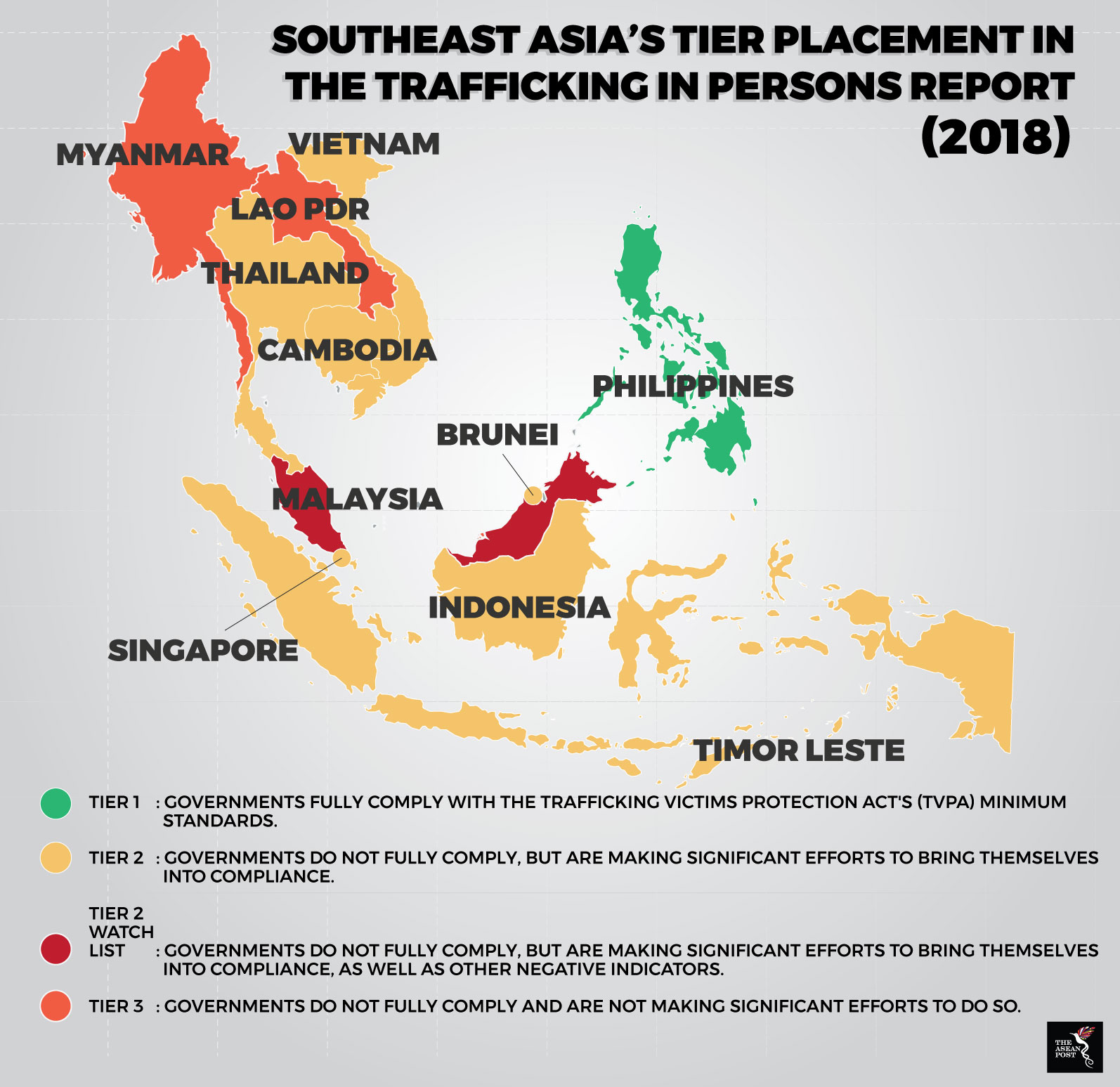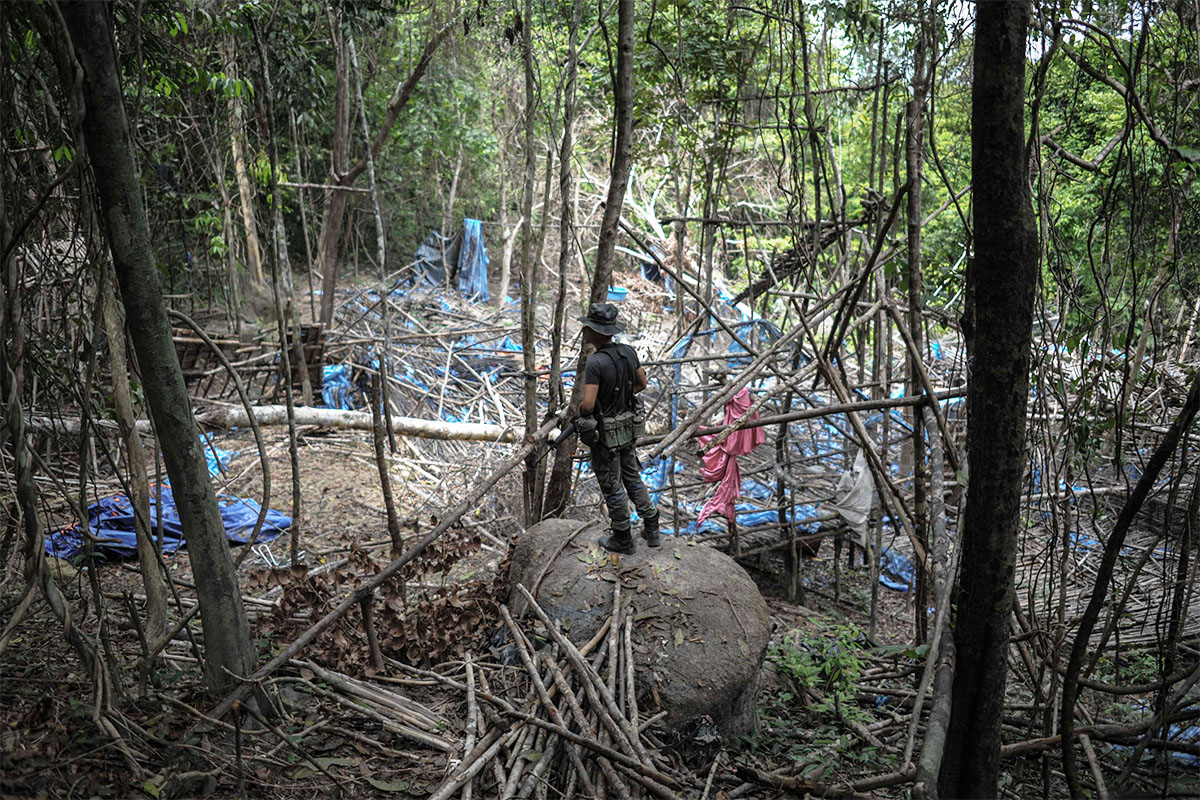Human trafficking in Southeast Asia is still rampant as revealed by the United States (US) State Department’s latest annual Trafficking in Persons report. Dubbed by the US State Department as the “the world's most comprehensive resource of governmental anti-human trafficking efforts,” the report shows that human trafficking is still a massive problem in Asia.
In the report, countries are placed under different tiers based on their efforts in combating human trafficking. Countries are given a Tier 1 status if their governments fully comply with the Trafficking Victims Protection Act's (TVPA) minimum standards. Tier 2 is for countries whose governments haven’t fully complied but are making efforts. Being placed in the Tier 2 Watch List means that the country’s government is making efforts to comply with standards but is failing in other indicators. Countries in Tier 3 have governments that are not making any efforts to comply with the TVPA’s minimum standards.
A majority of Asian countries were either listed in Tier 2 or Tier 3, while only a handful were listed in Tier 1. In the East Asia and Pacific region, only Japan, Taiwan, South Korea and Australia were listed in Tier 1.
Southeast Asia remains as a hub for human trafficking. The region is a source and destination country for men, women and children subjected to forced labour and the sex trade. The region is also a transit point for traffickers from other parts of the world.

Source: Trafficking in Persons report (2018)
In this year’s report, the Philippines is the only regional representative in Tier 1. The Philippines was upgraded to Tier 1 from Tier 2 in 2016 after carrying out various reforms to combat human trafficking.
An estimated 10 million Filipinos work abroad and a significant number of these workers are subjected to sex and labour trafficking – predominantly via debt bondage – in the Middle East and other parts of Asia. Over the past year, the Philippines has increased protection efforts for victims of trafficking. Through law enforcement activities, the government there has identified 1,839 potential victims of trafficking, of whom 1,422 were females and 410 were children. The Department of Social Welfare and Development has also been heavily involved in helping these victims by providing medical assistance, legal services and more. Aside from that, anti-trafficking activities have also increased under the government’s watch.
Thailand’s status was also boosted as it moved from Tier 2 Watch List to Tier 2. Last year, the government there increased its efforts to prevent trafficking. It increased funding for migrant labour management and anti-trafficking efforts to 3.6 billion baht (US$110.4 million) in fiscal year 2018 from US$98.2 million in fiscal year 2017. However, the report points out that Thailand remains as a popular destination for traffickers particularly those that partake in sex trafficking. It is mentioned that women, men and children from Thailand, other Southeast Asian countries, and some African countries are subjected to labour and sex trafficking in Thailand.
Two countries in the region are facing a downgrade by the US State Department. Malaysia was downgraded from Tier 2 to Tier 2 Watch List this year as “the government did not demonstrate overall increasing efforts compared to the previous year”.
One of the cases cited was the 139 mass graves in 28 detention camps discovered in the northern state of Perlis in 2015, where the victims were believed to be Rohingya refugees. The failure of the government there to prosecute the officials involved was said to be one of the reasons for the downgrade.
Aside from refugees, Malaysia is also a major destination for people subjected to forced labour. The victims of such trafficking are said to make up a large portion of the documented and undocumented migrant workers in the country.
Myanmar has also been downgraded to Tier 3 by the US State Department. The Trafficking in Persons report pointed out the current Rohingya crisis as the reason for the downgrade. Described as “ethnic cleansing” by the United Nations, the displacement of the Rohingya has made them vulnerable to exploitation by traffickers. Rohingya women are particularly exposed to such crimes. Many of those fleeing “were subjected to exploitation or transported to other countries for the purpose of sex trafficking” the US State Department report said; adding that refugees were also vulnerable to "forced labour" in jade mines and other industries.
Overall, the situation in Southeast Asia is dire. It is even more embarrassing considering the fact that in 2015, ASEAN signed the Convention Against Trafficking in Persons, Especially Women and Children (ACTIP) at the 27th ASEAN summit. While some countries such as the Philippines and Thailand may be improving, others are deteriorating. ASEAN needs to come together to rethink its strategy as human trafficking cannot be fought alone.
